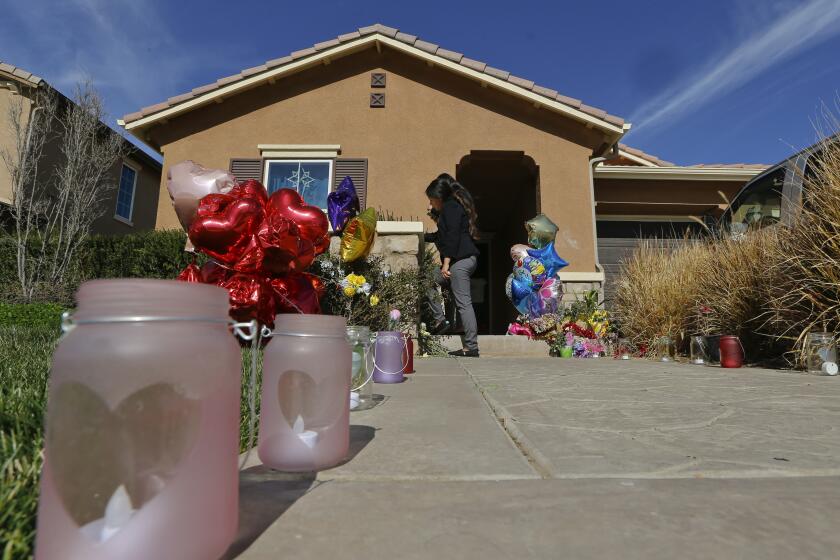Slow-Growth Initiative Called Confusing
In a scathing attack on the slow-growth initiative proposed for next June’s ballot, two top county officials said this week the measure is so confusing and full of non sequiturs that its meaning probably will have to be determined in the courts if it passes.
County Administrative Officer Larry Parrish and Environmental Management Agency Director Ernie Schneider also said that passage of the initiative would have “overall adverse impacts on the pocketbook of existing and future county residents.”
In a report to the Board of Supervisors dated Tuesday, Parrish and Schneider said they could only speculate on the effects of the initiative if it passes. The lack of certainty stems from the initiative’s “undefined terms, terms defined but not used, non sequiturs, confusing references, procedural uncertainties and potential conflicts with state law,” the report said.
Gregory Hile, a co-author of the initiative, said that if county officials cannot understand the document, “that’s their problem because they refused to participate in meetings with us. If they can’t understand it, they have nobody to blame but themselves.”
The initiative is intended to bar major construction projects in areas where average vehicle speeds are below 30 to 35 miles per hour and where vehicles cannot make it through an intersection on one cycle of a traffic light.
It also sets minimum response times for emergency vehicles and requirements for providing flood control and parks. To qualify for the ballot, 66,000 signatures of registered voters are needed.
Hile said he and attorneys for the initiative’s backers met with developers, building trade unions, contractors and lawyers for those groups and “came up with what everybody considered to be the best possible document.”
He said the meetings spurred several modifications of early drafts of the initiative.
One of the earlier drafts led Schneider and Parrish to conclude in July that the measure could cost the county at least $1.3 billion for roads, parks, flood control projects, fire stations and other improvements.
The latest report gave no cost estimate and said it would take another six to eight weeks to update the July figures.
County supervisors have not taken an official position on the initiative, but some have spoken against it individually. So have builders and developers.
In recent years, a growing share of the cost of new roads has been financed through developer fees, and county officials say the proposed initiative would stop development and thus cut off money for transportation improvements.
Although initiative backers have said they want to put the measure on the ballot in each of the county’s 26 cities, Parrish and Schneider said in their report that they saw “no evidence that a comprehensive countywide effort is actually being pursued.”
If the slow-growth measure were to apply only in unincorporated county territory, it would not improve traffic, the report said.
In the past, county supervisors have criticized cities for not matching their effort to link road building to development. If the county imposes controls but cities do not, traffic does not get better because cars use roads that cut across jurisdictional lines to get to and from cities with mushrooming housing development or job centers, county officials said.
Hile said his group is working in all the cities in the county to get the initiative adopted and has gotten “tens of thousands” of signatures countywide.
“The overwhelming response is favorable,” he said. “We’re not having anybody say they’re not going to sign it. They’re all signing it.”
Supervisor Don R. Roth said he was aware of the initiative circulating in Anaheim, where he was mayor before becoming supervisor in January, and in Garden Grove.
“I don’t take it lightly,” Roth said. “We should not just think it is going to be some kind of Laguna Beach-Costa Mesa type of initiative. I think (proponents) are going to go all out on it” across the county.
Roth said he had not seen the latest analysis by Parrish and Schneider. But after receiving one of their reports earlier, he said it was “critical that we not let (the initiative) become law. The economic impacts would damage our entire region.”
He said Thursday the costs were “shattering enough” to consume the county’s annual budget of more than $1 billion. He said a fiscal analysis of the final version of the initiative is “absolutely necessary” and promised to request one from county staff.
The report from Parrish and Schneider also criticized the initiative for requiring that patrol cars, fire trucks and paramedic vans be able to respond to an emergency call within five minutes 85% of the time and to non-emergency calls within 15 minutes 85% of the time.
“If it’s not an emergency, we still question why we would have to get there in 15 minutes,” the report said. They warned that those requirements could force the county to hire more emergency services personnel at a time when it is trying to hold spending down.
More to Read
Sign up for Essential California
The most important California stories and recommendations in your inbox every morning.
You may occasionally receive promotional content from the Los Angeles Times.










